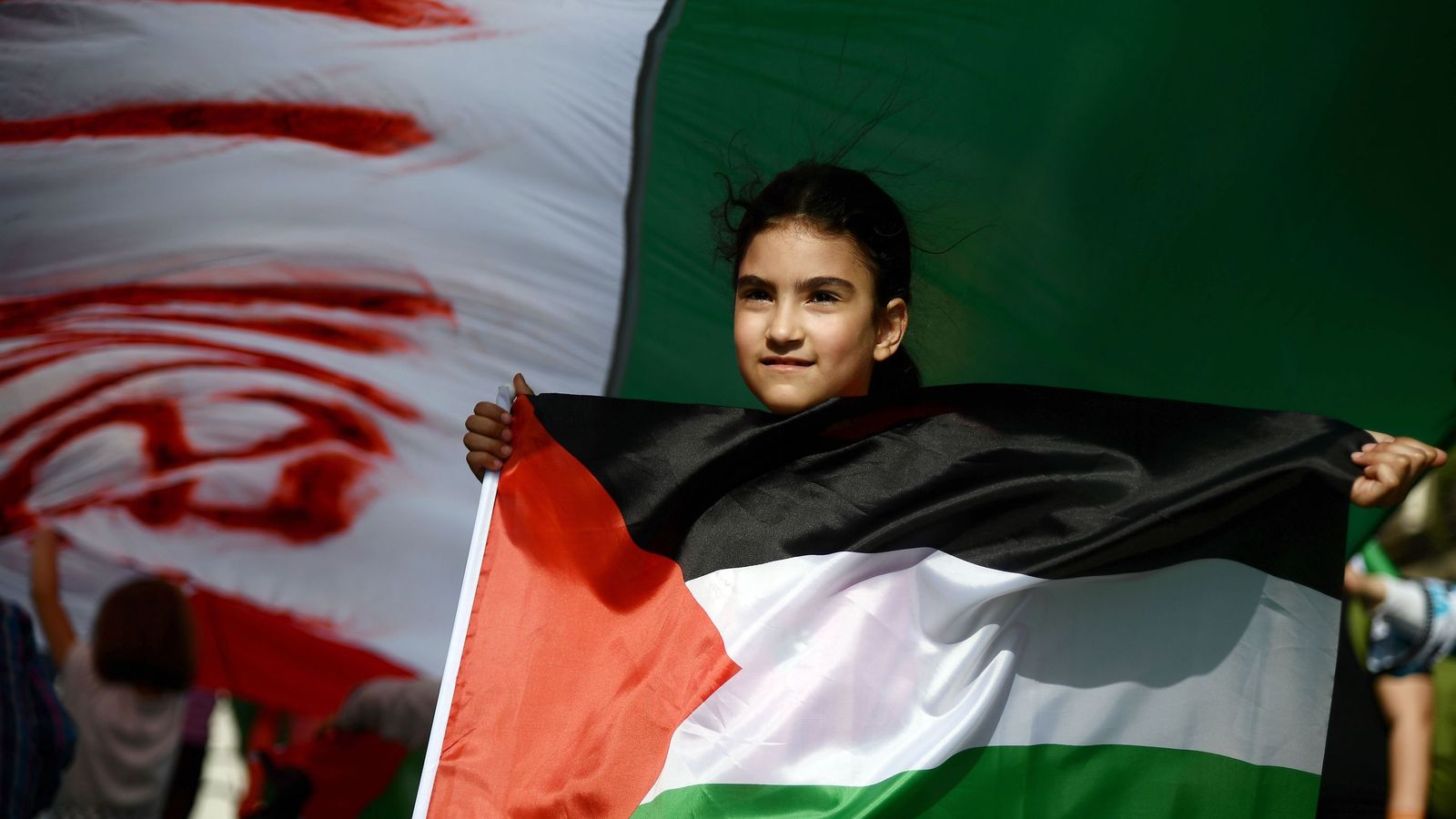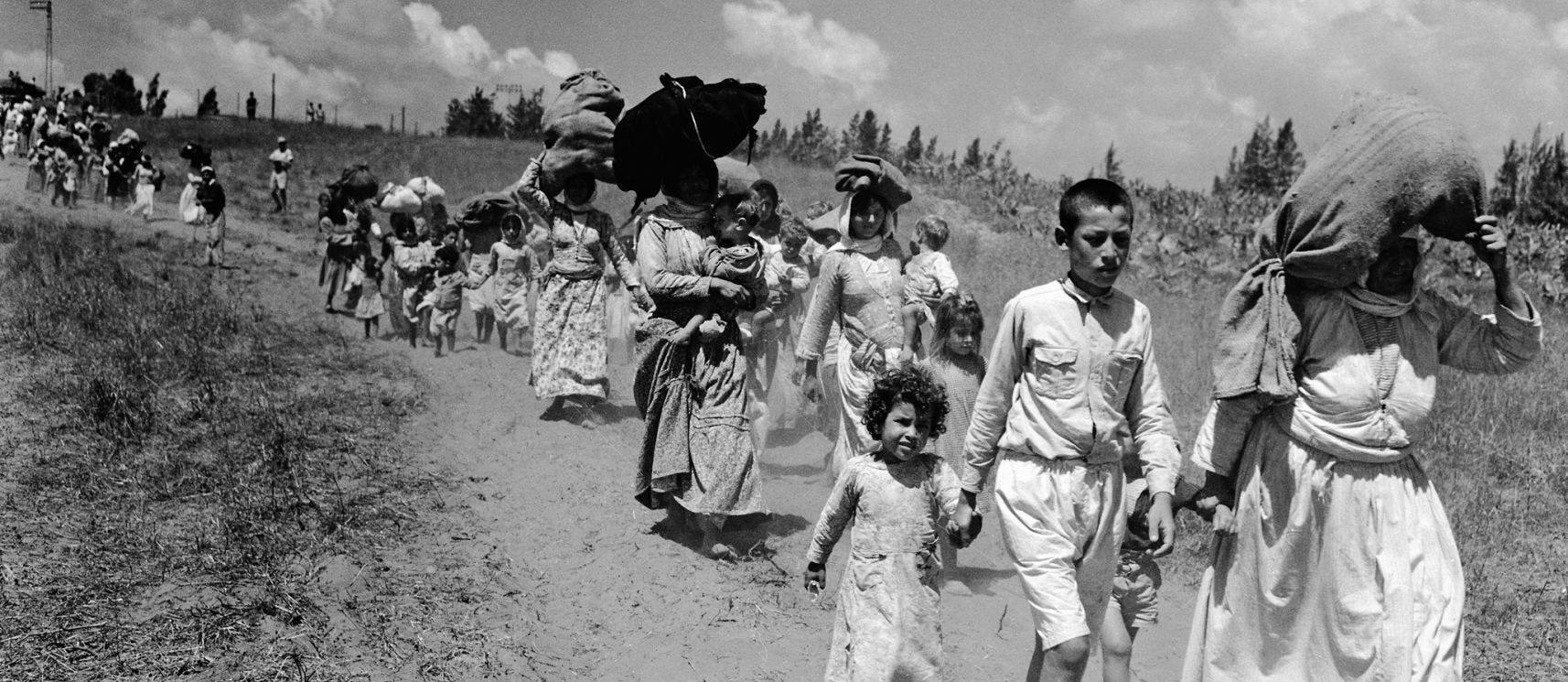
Remembering 72 Years of the Nakba in the Shadow of Annexation
(May 15, 2020) — When Palestinians commemorate the Nakba — the ethnic cleansing of Palestine in 1948 — they are not simply remembering a past event in which over 750,000 Palestinians were expelled from their homeland, over 400 villages and towns destroyed and thousands killed.
They are also marking a continued Nakba (al-Nakba al-Mustimirrah in Arabic) — an ongoing process of erasure and ethnic cleansing which has seen Palestinians ghettoised, fragmented, killed and more.
This year we will be marking 72 years of the Nakba and yet one word seems to be taking front and centre stage: annexation. Ever since the announcement of US President Donald Trump’s ‘Deal of the Century’ at the end of January this year, formal annexation of the occupied West Bank by Israel has been looming.
Indeed, it is rumored that US Secretary of State Mike Pompeo’s visit to Netanyahu on Wednesday was to give the green light for the annexation of the Jordan Valley.

The term ‘annexation’ in its legal meaning refers to when following the forced acquisition of territory by an occupying regime, said occupier applies its sovereignty over the occupied territory.
The act is illegal under international law and has been reaffirmed by the UN Security Council as such in the case of Israel’s occupation of the West Bank, Gaza and Syrian Golan Heights many times.
It’s pertinent also to describe what annexation means in non-legal terms and its actual manifestations on the ground; the theft of land, total control over it and the resources, and usually the displacement of large swathes of the indigenous population.
In Palestine, this initially happened in 1948 with the foundation of the settler colonial State of Israel, and later with the occupation of the 1967 territories and their de facto annexation.
International law deemed this later occupation and annexation as illegal, and for the last 53 years there have been lukewarm condemnations by the international community.
All the while, Israel has solidified the occupation and continued with attempts to make it irreversible through the “illegal” settlement enterprise, which was launched by an Israeli Labour Government.
This last point is an important one — settlement building is not just a policy of the right-wing in Israel, as some liberals in the US and elsewhere may like to believe.
It is a cross partisan policy and one that enjoys wide support in Israeli society, as demonstrated by the fact that both Likud and the opposition coalition ‘Blue and White’ fought over who would deliver formal annexation throughout this year’s election period.
Palestinians and their leadership have very little influence over whether or not this de jure annexation will happen, and it seems in actual fact that the decision will be made in Washington DC.
While the ramifications of official annexation will be serious, indeed it will mean immediate and mass confiscation of Palestinian land, it is important to put it within the context of a process that has already been underway for the last 72 years — the continuous Nakba. Formal annexation will simply mean an acceleration of that process.
This is not a defeatist attitude, but rather one that acknowledges the reality of de facto annexation — one that seems to invoke very little tangible reaction from the international community. This is why official annexation of the West Bank or parts of it might actually be a game changer.
It would no longer allow third parties to maintain that the occupation is temporary or that the theft of Palestinian land is a red line. This in turn places the validity of the international legal regime front and centre.
For Palestinians, the commemoration of 72 years of the Nakba is both poignant and empowering. Poignant because we remember how our society was shattered in 1948, how our people continue to be dispersed, imprisoned and killed and how our lands are being increasingly taken from us.
Yet it’s empowering because we survived ethnic cleansing, and, despite the exile of half of our people, we still have a presence on the land.
Israel formally annexing yet more Palestinian land doesn’t change any of this, it simply confirms what Palestinians have been saying since 1948.
Yara Hawari is the Palestine Policy Fellow of Al-Shabaka, the Palestinian Policy Network.

Israeli settlement in Occupied Territory (Photo: Asharq Al-aswat)
The History of Israeli Settlements Since 1967
(November 22, 2019) — Soon after Israel conquered the West Bank, Gaza Strip and East Jerusalem in the June 1967 war, the government began establishing settlements in the newly captured occupied territory.
Initially small in number, the settlements rapidly grew across the occupied Palestinian territory. Today, around 620,000 Israeli settlers live in over 200 settlements, roughly 11 percent of the total Jewish population in historic Palestine.
The transfer of population into occupied territory is a clear violation of International Humanitarian Law and the Fourth Geneva Convention. All Israeli settlements in the occupied Palestinian territory are considered illegal under international law.
The impact of the settlement enterprise is vast. Roadblocks, checkpoints and other infrastructure designed to protect settlers, such as segregated roads, severely limit Palestinian movement.
Meanwhile, the appropriation of land and water sources for settlement use leads to a loss of livelihoods for farmers, and limits the urban development of Palestinian towns and cities.
Violence by settlers, many of who are armed, against Palestinian civilians is also a routine part of daily life, with actions ranging from torching farmlands and throwing stones at cars, to the use of live fire and arson attacks.
Critically, Israeli settlements undermine the Palestinian right to self-determination by limiting the possibility of a contiguous state, instead creating a series of disconnected enclaves throughout the West Bank.
The Settler Movement Is Born
Months after the June 1967 war, the first Israeli settlement, Kfar Etzion, was established in the occupied West Bank. Settlements were initially built in key strategic areas under military pretexts, but were sparsely populated.
Religious Zionism emerged in the messianic fervor of Israel’s comprehensive victory in the 1967 war and the country’s vast territorial expansion. Early religious settlers believed the Land of Israel was promised to them by God, legitimising a divine mission to build on occupied land.
In 1968, firebrand right-wing Israeli Rabbi Moshe Levinger infiltrates Hebron with followers of the Land of Israel Movement to celebrate Passover, and refuses to leave.
Moved by Israeli forces to a nearby army base, the government eventually permits the establishment of Kiryat Arba settlement on the outskirts of Hebron — representing the first wave of ideological settlers in the West Bank.
That same year, the UN Security Council votes 13-0 with 2 abstentions to adopt Resolution 252 “reaffirming that acquisition of territory by military conquest is inadmissible”.
During the same period, the Gush Emunim (Bloc of the Faithful) begins gaining prominence following the 1973 Arab-Israeli war, organizing protests, marches and sit-ins to further the settlement cause. The movement wins a key victory in 1975 as the government allows Eilon Moreh settlement to be built near Nablus.
In 1977, Labor Prime Minister Yitzhak Rabin agrees to the establishment of Maale Adumim settlement, which would eventually become a major industrial hub with over 30,000 people. The settlement, which became a city in 1991, was part of a keystone Israeli policy to separate Jerusalem from the West Bank, and prevent the contested city from being divided.
In 1978, the State Department under US President Jimmy Carter deems that Israeli settlements are “inconsistent with international law”.
Likud Enters Government
The right-wing Likud party led by Menachem Begin enters power and actively develops settlements in the occupied West Bank and Gaza Strip, providing financial incentives and tax concessions for the first time to encourage Israeli Jews to move to the occupied Palestinian territories.
In 1980, thirteen years after capturing East Jerusalem, the Israeli Knesset passes Basic Law: Jerusalem, Capital of Israel, which states in Article 1 that “Jerusalem, complete and united,” is the capital of Israel, formalizing its annexation.
In 1982, Israel completes the return of the Sinai Peninsula to Egypt under the 1979 peace treaty, removing some 7,000 Israeli settlers from the territory.
By the end of Likud’s rule in 1983 the settler population in the occupied Palestinian territories is around 23,700.
The Oslo Accords
By the time the Oslo Accords are signed in 1993, the settler population is 116,300. Settlements have expanded into key areas such as the Jordan Valley, which forms a third of the West Bank and is a vital agricultural and security corridor.
Despite being raised by Palestinian negotiators at the 1991 Madrid Peace Conference, the issue of settlements — together with Jerusalem and refugees – are set aside in the Oslo Accords for future talks.
Israeli settlement activity nearly doubles in the years to come, with the settler population numbering 198,300 in 2000.
Separation Wall
In 2002, Israel begins construction of its controversial separation wall. Measuring 670-kilometres in length, 85 percent of its route is inside the occupied West Bank and surrounds Israel’s major settlement blocs touted for annexation.
Gaza Withdrawal
In 2005, Israel’s hard-line prime minister Ariel Sharon, a patron of the settler movement, unilaterally withdraws 8,500 settlers from the Gaza Strip.
Since 1967, Israel had established over 21 Jewish settlements in the coastal territory. Over half of the Israeli public opposed the evacuation.
Obama and the Settlements
In a parting shot to Netanyahu’s right-wing government, outgoing US President Barack Obama refuses to veto a resolution demanding a halt to all Israeli settlements, which the UN Security Council adopts.
Despite taking a hard line, settlements grow rapidly under Obama’s presidency, with Netanyahu pushing a wave of construction that matched, and even exceeded, the amount of building that took place under his predecessors during the Bush years.
EU Rules to Label Settlement Products
The EU’s top court rules that food products from Israeli settlements in the occupied Palestinian territories must be labeled, backing EU guidelines issued in 2015.
The ruling reinforces the distinction between Israel proper and illegally occupied Palestinian territory.
Trump’s Pro-Israel Shift
Donald Trump enters office in 2017, and immediately drops America’s long-standing policy of a two-state solution. He appoints David Friedman, a fervent proponent of, and donor to, settlements as US ambassador to Israel.
Israel approves the first new settlement in the occupied West Bank for two decades in 2017 near the Palestinian city of Nablus.
Later in 2017, Trump recognizes Jerusalem as Israel’s capital, effectively rejecting Palestinian claims to the city.
There are now more than 200,000 Israeli settlers in East Jerusalem.
With little resistance from a friendly Trump administration, Israel launches the largest settlement construction push in years, approving thousands of homes.
In March 2019, Trump officially recognizes Israeli sovereignty over the occupied Golan Heights, seized from Syria in 1967.
US Says Israeli Settlements ‘Not Illegal’
On 18 November, US Secretary of State Mike Pompeo repudiates a 1978 State Department legal opinion that held that civilian settlements in the occupied territories are “inconsistent with international law,” the latest in a series of Trump administration moves that weaken Palestinian claims to statehood.
Posted in accordance with Title 17, Section 107, US Code, for noncommercial, educational purposes.